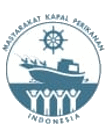SENYAWA METABOLIT SEKUNDER KAPANG ENDOFIT TP6 DAN TPL2 YANG DIISOLASI DARI TUMBUHAN PESISIR TERONG PUNGO (Solanum sp.)
Abstract
Full Text:
XMLReferences
Agusta A. 2009. Biologi dan kimia jamur endofit. Bandung (ID): ITB.
Cushnie TP, Lamb AJ. 2005. Antimicrobial activity of flavonoids. Journal of Antimicrobial Agents. 26:343-356.
Cowan M. 1999. Plant product as antimicrobial agent. Clinical Microbiology Reviews. 12 (4):564-582.
Dewick PM. 1999. Medicinal Natural Product: A Biosynthetic Approach. England: John Wiley & Sons Ltd.
Harborne JB. 1987. Metode Fitokimia. Ed ke-2. Padmawinata K, Soediro I, penerjemah. Bandung (ID): ITB. Terjemahan dari: Phytochemical Methods. 10-230.
Heneman K, Zidenberg-cherr S. 2008. Nutrition and health: Some facts about phytochemicals. Nutrition research, 1-4.
Lai HY, Yau YY, Kim KH. 2010. Blechnum orientale Linn- a fern with potential as antioxidant, anticancer and antibacterial agent. BMC Complementary and Alternative Medicine. 10-15.
Lumyong S, Lumyong P, Hyde KD. 2004. Endophytes. In Jones, E. B. G., M. Tantichareon and K. D. Hyde (Ed.), Thai Fungal Diversity. BIOTEC Thailand and Biodiversity Research and Training Program (BRTI/TRF. Biotec). 197–212.
Mahanom H, Azizah AH, Dzulkifly MH. 1999. Effect of different drying methods on concentration of several phytochemicals in herbal preparation of 8 medicinal plants leaves. Malaysian Journal of Nutrition. 5: 47-54.
Noverita, Fitria D, SInaga E. 2009. Isolasi dan uji aktivitas antibakteri jamur endofit dari daun dan rimpang Zingiber ottensi Val. Jurnal Farmasi Indonesia. 4(4): 171-176.
Nursid M, Pratitis A, Chasanah E. 2010. Kultivasi kapang MFW-01-08 yang diisolasi dari ascidia Aplidium longithorax dan uji aktivitas sitotoksinya terhadap sel kanker payudara T47D. Jurnal Pascapanen dan Bioteknologi Kelautan dan Perikanan. 5(2):103-110.
Petrini O, Sieber TN, Toti L, Viret O. 1992. Ecology, metabolite production, and substrate utilization in endophytic fungi. Nat. Toxins. 1:185-196.
Qin JC, Zhang YM, Gao JM, Bai MS, Yang SX, Laatsch H, Zhang AL. 2009. Bioactive metabolites produced by Chaetomium globosum, an endophytic fungus isolated from Ginkgo biloba. Bioorganic and Medicinal Chemistry Letters. 19:1572-1574.
Srikandace Y, Hapsari Y dan Simanjuntak P. 2007. Seleksi mikroba endofit Curcuma zedoaria dalam memproduksi senyawa kimia antimikroba. Jurnal Ilmu Kefarmasian Indonesia. 5(2): 77-84.
Strobel GA, Daisy B. 2003. Bioprospecting For Microbial Endophytes And Their Natural Products. Microbiology And Molecular Biology Reviews. 67:491 -502.
Syarmanila W. Lely, LAUPA N. 2007. Uji sitotoksik hasil fermentasi kapang endofit
buah mahkota dewa (Phaleria macrocarpa) terhadap sel MCF-7. J. Ilmu Kefarmasian Indonesia 5(1): 23 – 24.
Tan RX, Zou WX. 2001. Endophytes : A Rich Source Of Functional Metabolites. Natural Product Report. 18 : 488 - 459.
Ukhty N. 2015. Isolasi Kapang Endofit Tumbuhan Pesisir Terong Pungo (Solanum sp.) yang Memiliki Aktivitas Antibakteri Patogen Mulut [Tesis]. Bogor: Program Pascasarjana, Institut Pertanian Bogor.
DOI: https://doi.org/10.35308/jpt.v2i2.26
Refbacks
- There are currently no refbacks.
Copyright (c) 2018 Jurnal Perikanan Tropis
Jurnal Perikanan Tropis (print ISSN 2355-5564 ;online ISSN 2355-5572), is published by the Faculty of Fisheries and Marine Science Universitas Teuku Umar, Indonesia .

This work is licensed under a Creative Commons Attribution-NonCommercial-ShareAlike 4.0 International License










